Posts Tagged: Greg Kareofelas
How Many Tagged Migrating Monarchs Have You Seen?
It's rare to see a tagged monarch, either when it's migrating to its overwintering site or when it's clustered high in a tree, sheltered from the...
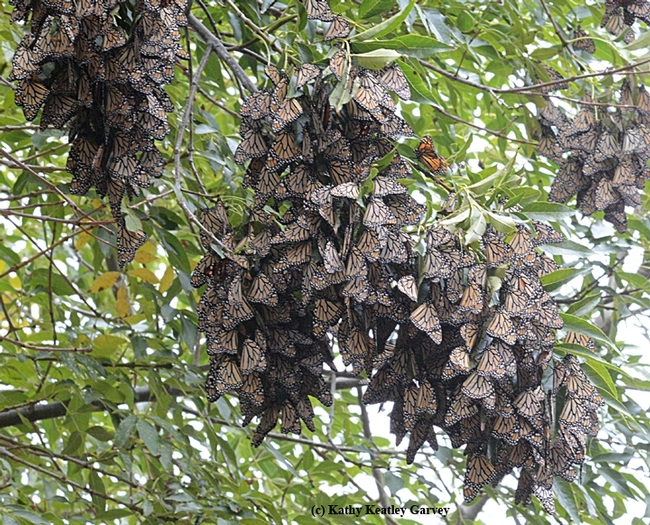
Roosting or overwintering monarchs in the Berkeley Aquatic Park on Nov. 30,2015. No tagged monarchs are visible. (Photo by Kathy Keatley Garvey)
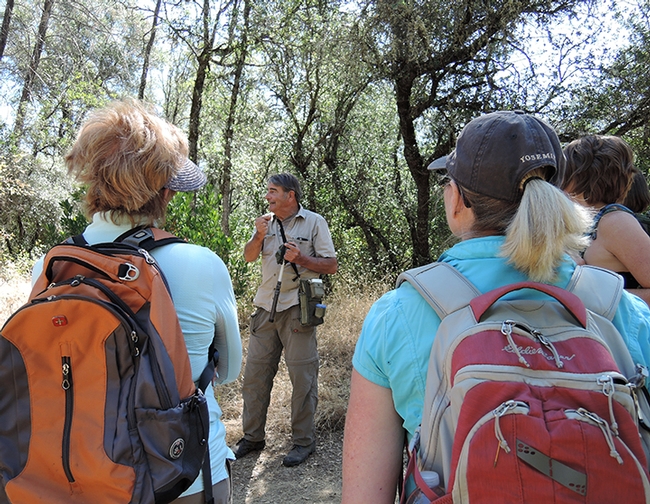
Naturalist Greg Kareofelas (center), an associate with the Bohart Museum of Entomology, has sighted two tagged migrating monarchs, one at Table Mountain and the other at Knights Landing. (Photo by Kathy Keatley Garvey)
Drama in the Pollinator Patch
So here's this newly eclosed male monarch trying to sip a little nectar from a Mexican sunflower (Tithonia). A female longhorned bee, probably...
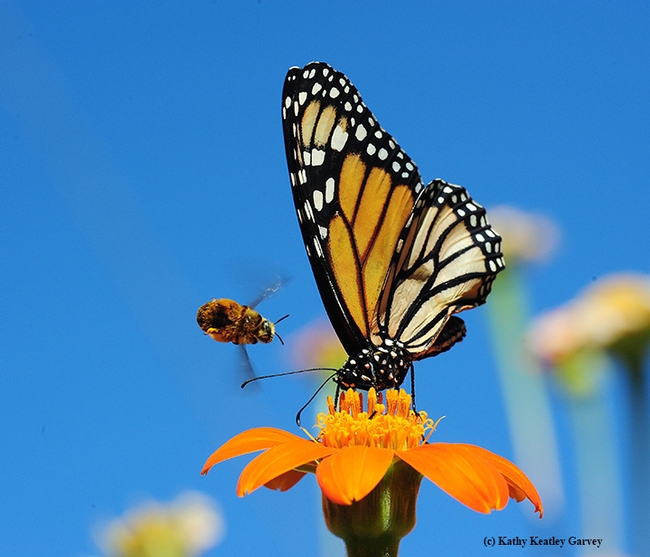
A pollen-packing female longhorned bee, probably Melissodes agilis (as identified by Robbin Thorp, emeritus professor of entomology at UC Davis) wants the same flower that the male monarch has claimed. This is a Mexican sunflower, genus Tithonia. (Photo by Kathy Keatley Garvey)
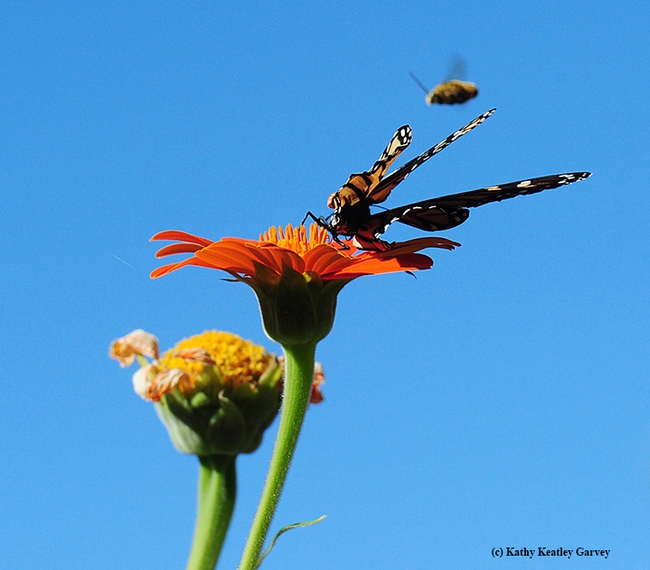
Just a blur, a male longhorned bee, probably Meliossodes agilis, targets a monarch. The monarch's wings are deformed; they did not fully expand. (Photo by Kathy Keatley Garvey)
Seeing Spots All Day
"You can hawk and perch in our yard all day if you want," I told her. And she did. A spotted dragonfly chose a spot in our pollinator...
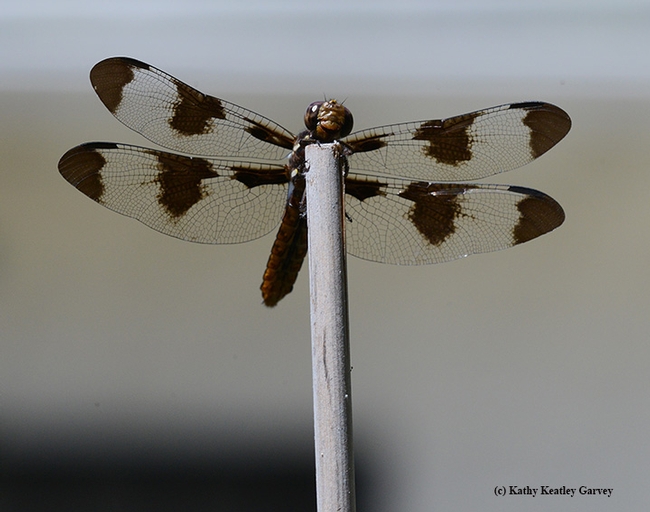
A female whitetail, Plathemis lydia, claims a bamboo stake. This dragonfly is often mistaken for a twelve-spotted dragonfly. (Photo by Kathy Keatley Garvey)
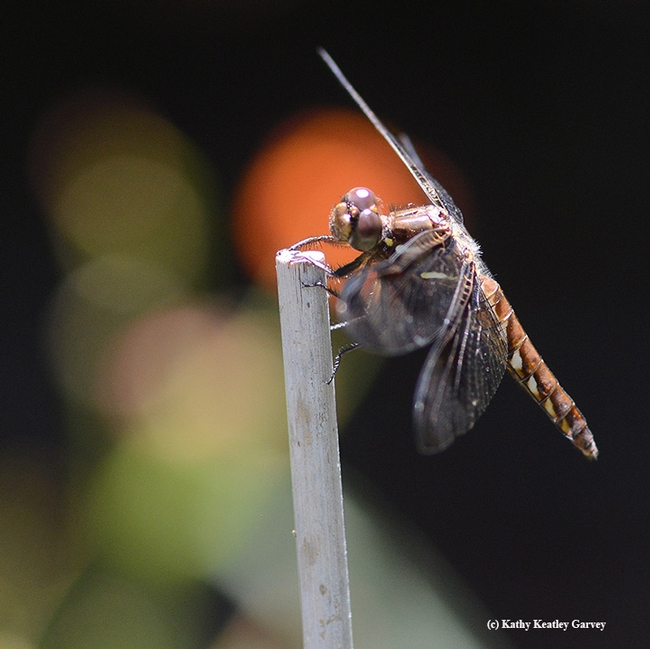
With an orange Mexican sunflower (Tithonia) in the background, the common whitetail checks out its surroundings. (Photo by Kathy Keatley Garvey)
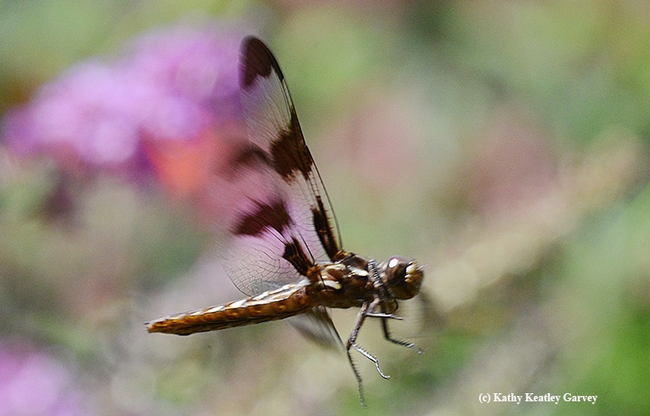
Caught in flight, the common whitetail dragonfly sails over the pollinator garden. (Photo by Kathy Keatley Garvey)
Quick, What's the California State Insect?
Quick, what's the California state insect? Umm, does California have a state insect? The Monarch? The Western Tiger Swallowtail? The Red Admiral?...
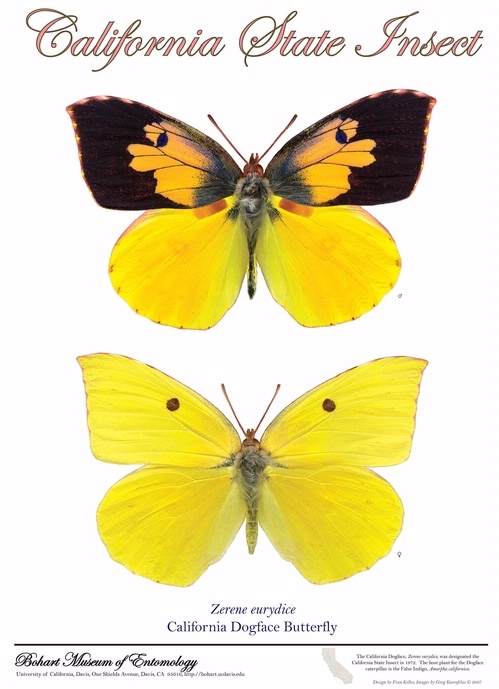
California dogface butterfly poster at the Bohart Museum of Entomology, UC Davis.
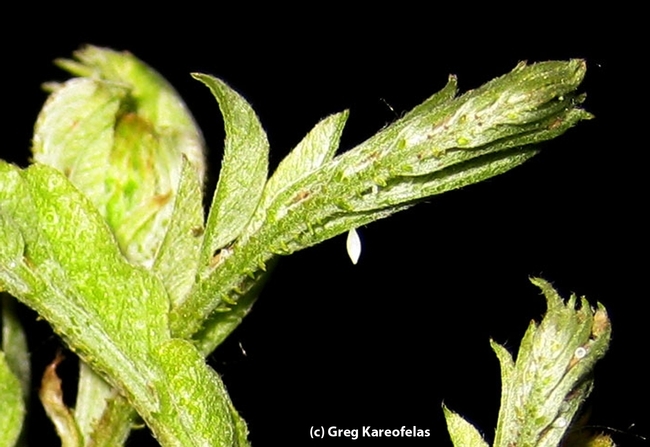
Egg of California dogface butterfly. (Photo by Greg Kareofelas)
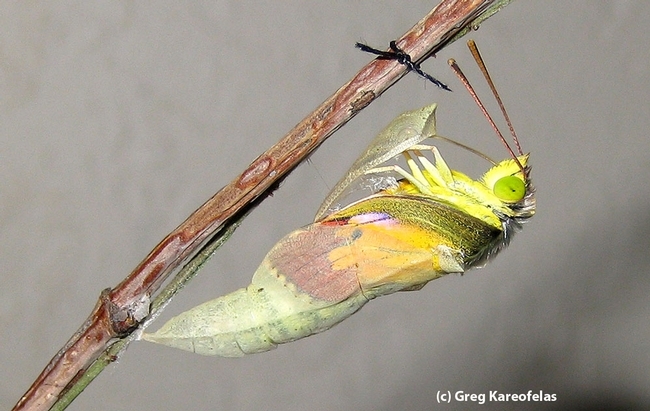
Adult California dogface butterly eclosing from chrysalis. (Photo by Greg Kareofelas)
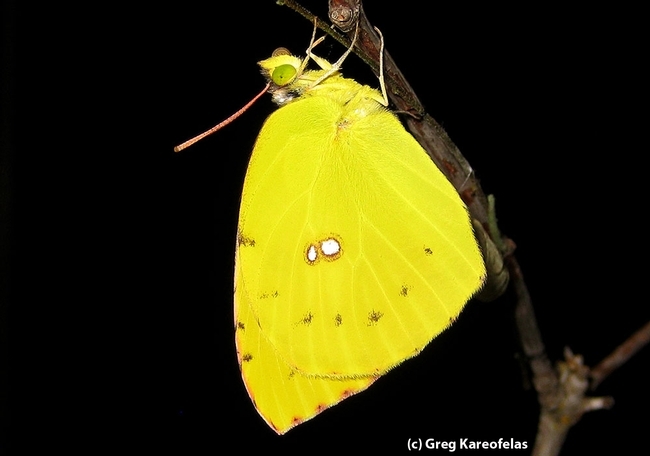
Newly emerged female California dogface butterfly. (Photo by Greg Kareofelas)
Why That Ol' Flame Stakes Out the Back Yard
Sometimes the red flameskimmer dragonfly (Libellula saturata) will let you approach it. Sometimes it's having a bad hair day or a bad predator/prey...
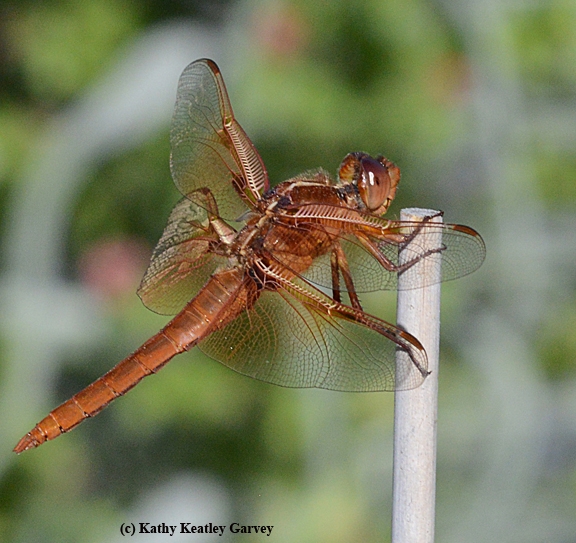
Red flameskimmer dragonfly (Libellula saturata) perches on a bamboo stake. (Photo by Kathy Keatley Garvey)
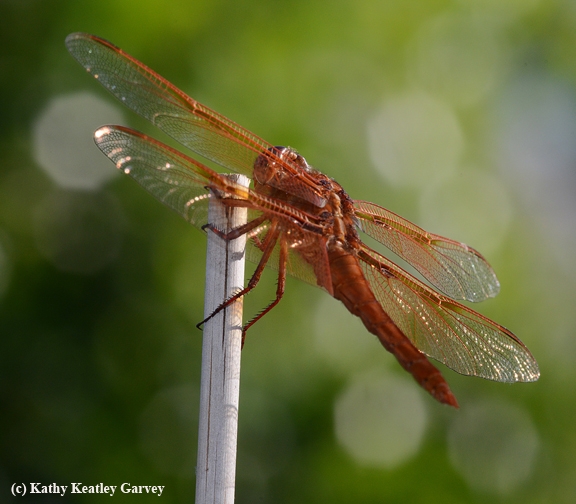
Hmm, is this my best side? Red flameskimmer dragonfly (Libellula saturata) perching on a bamboo stake. (Photo by Kathy Keatley Garvey)
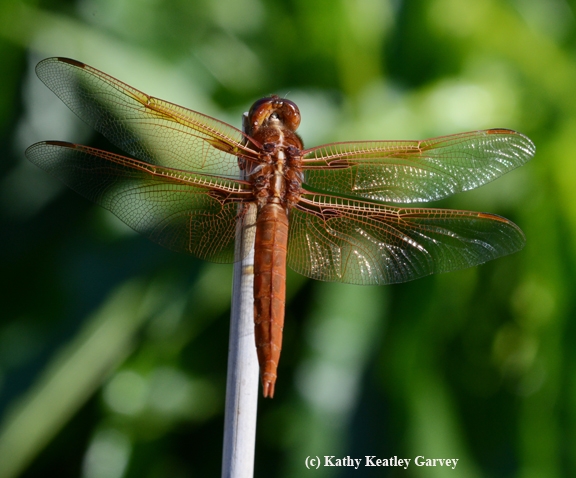
The red flameskimmer dragonfly (Libellula saturata) tries a new position. (Photo by Kathy Keatley Garvey)
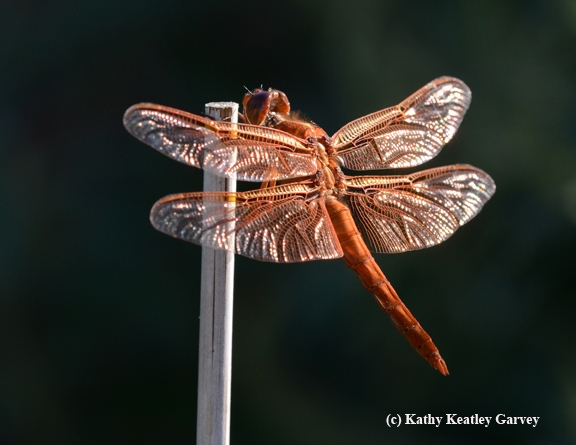
Late afternoon sun sets the red flameskimmer aglow. (Photo by Kathy Keatley Garvey)

